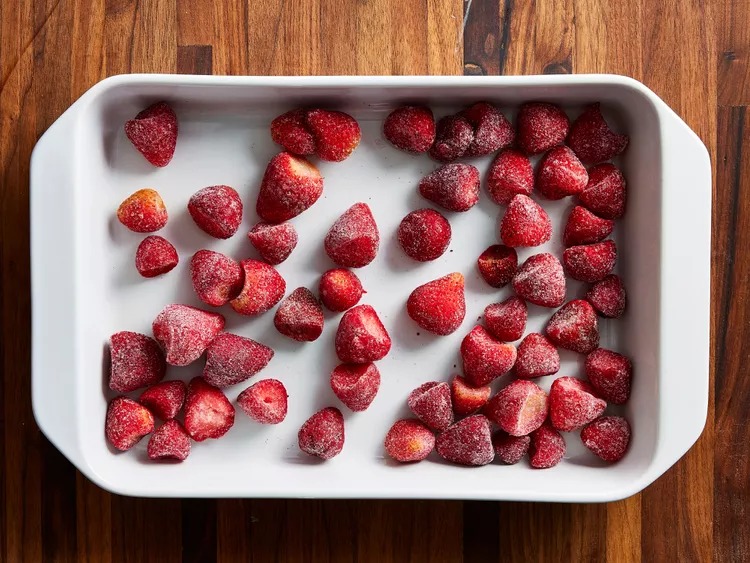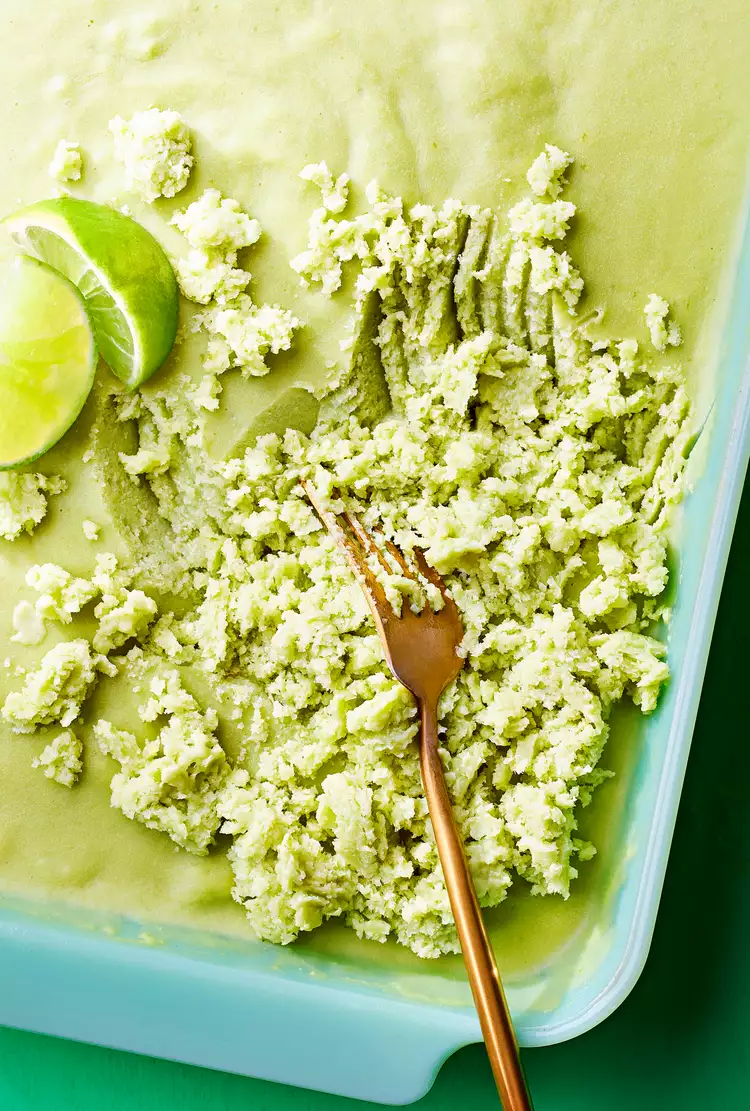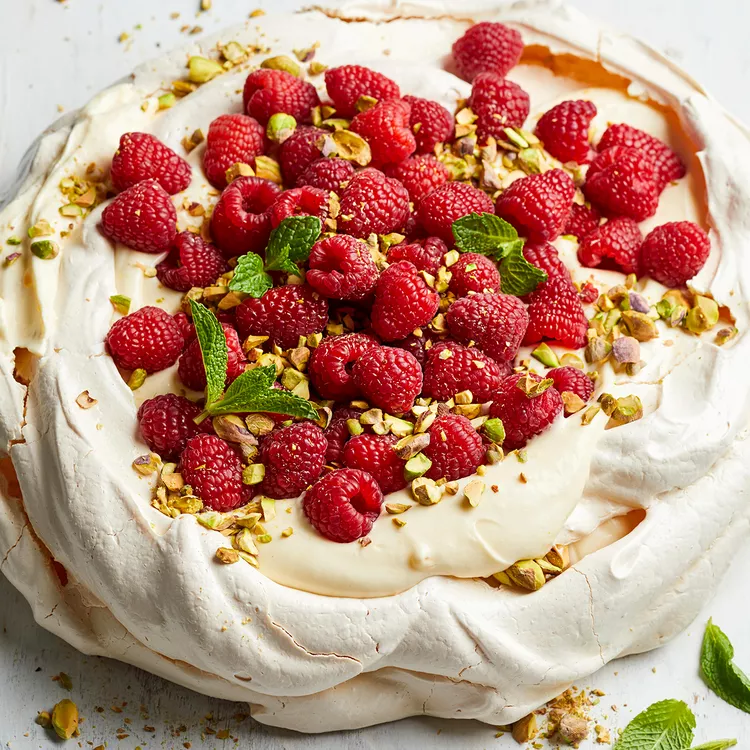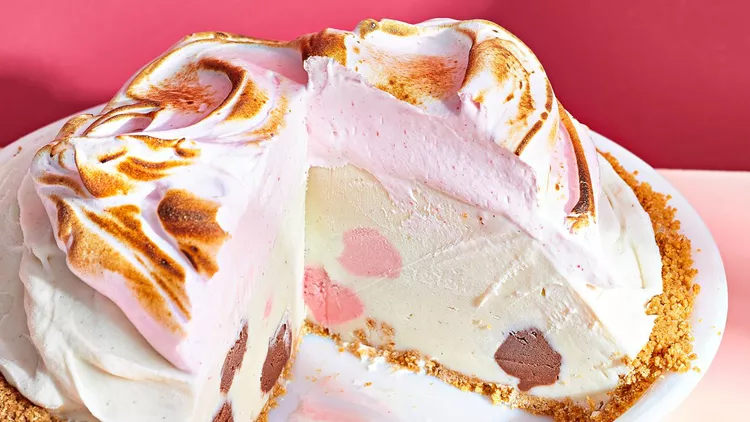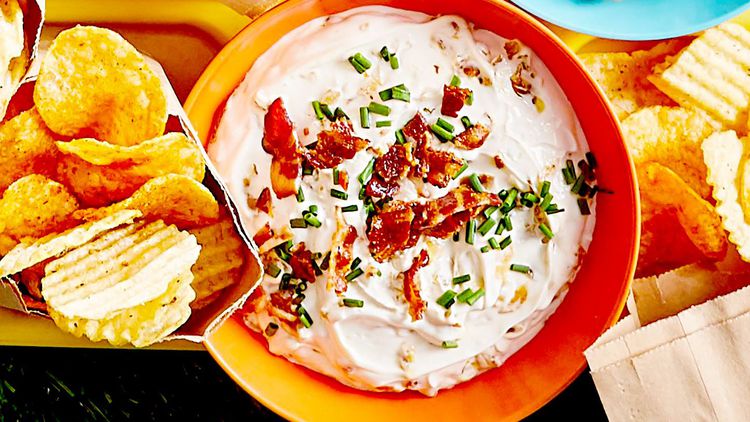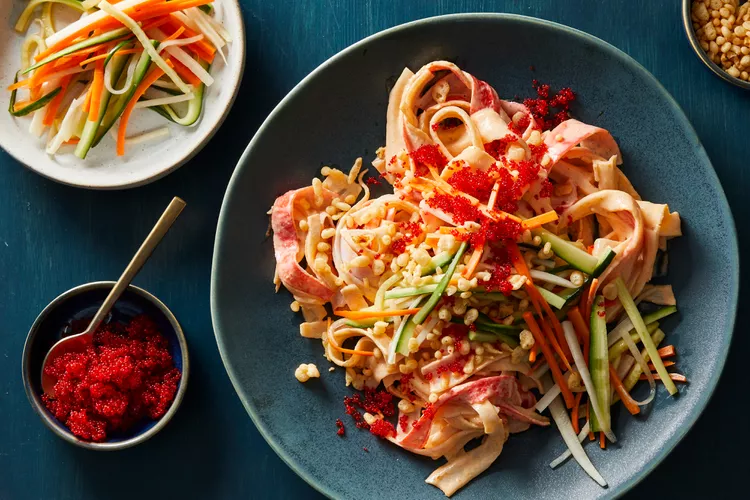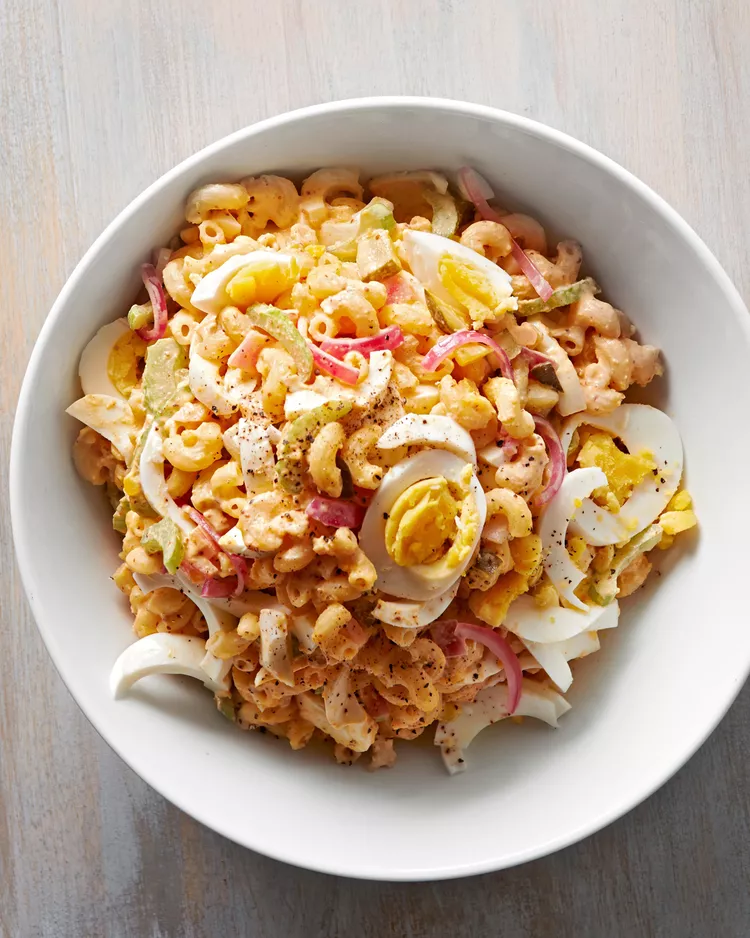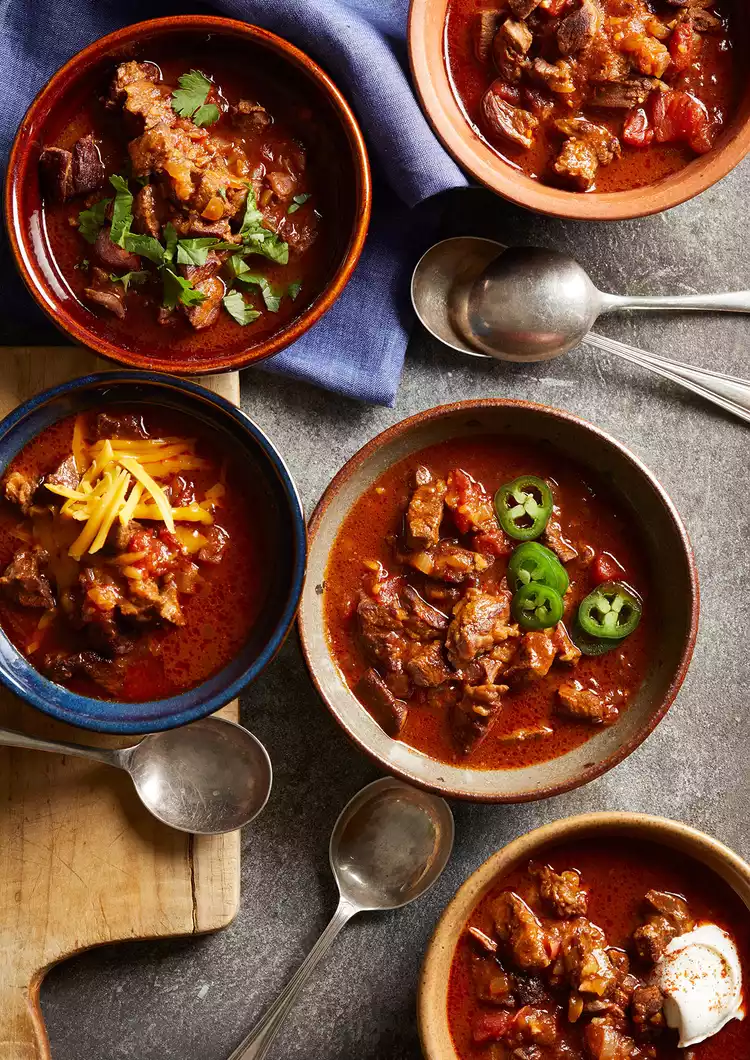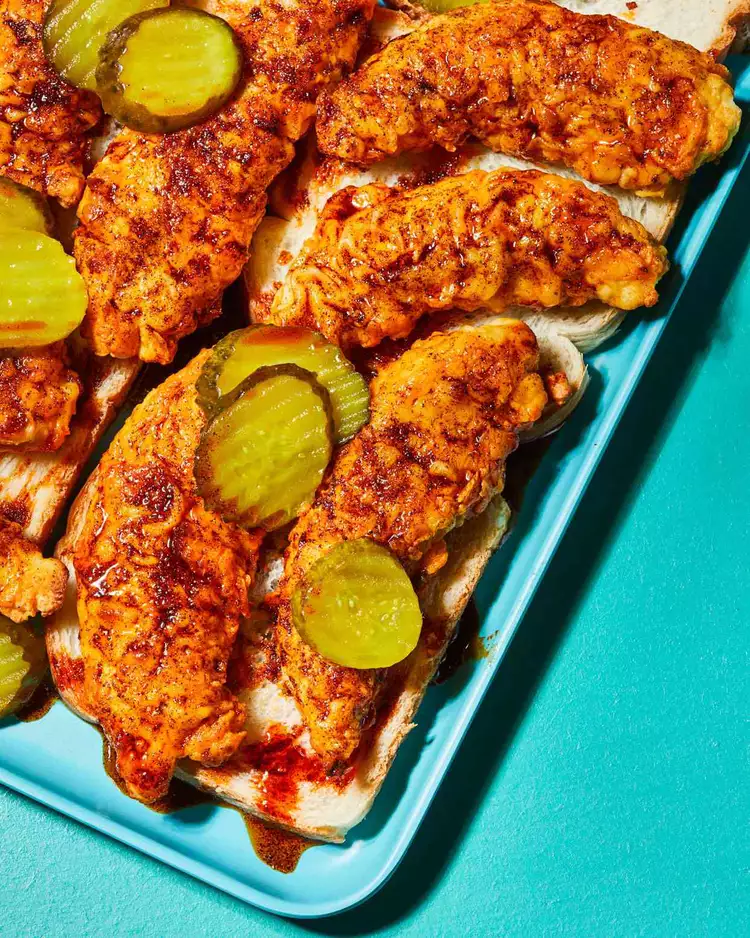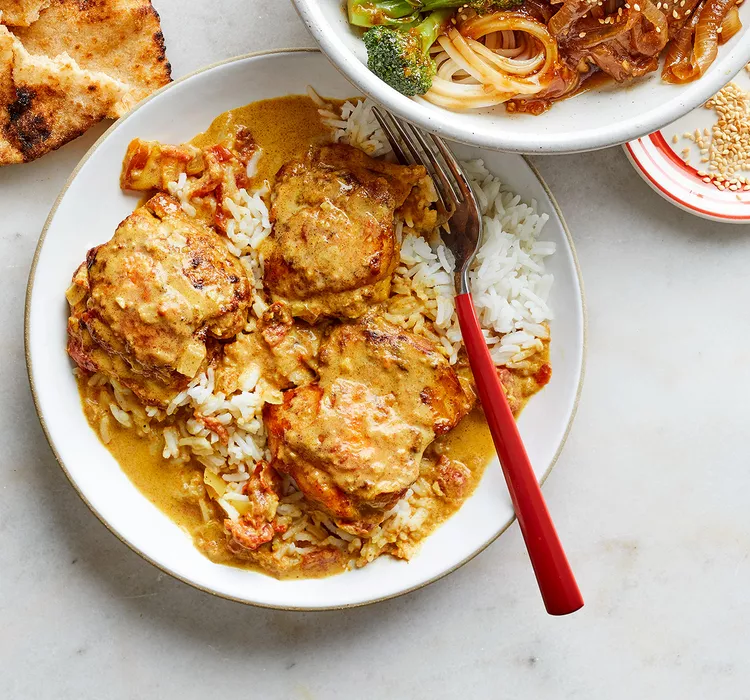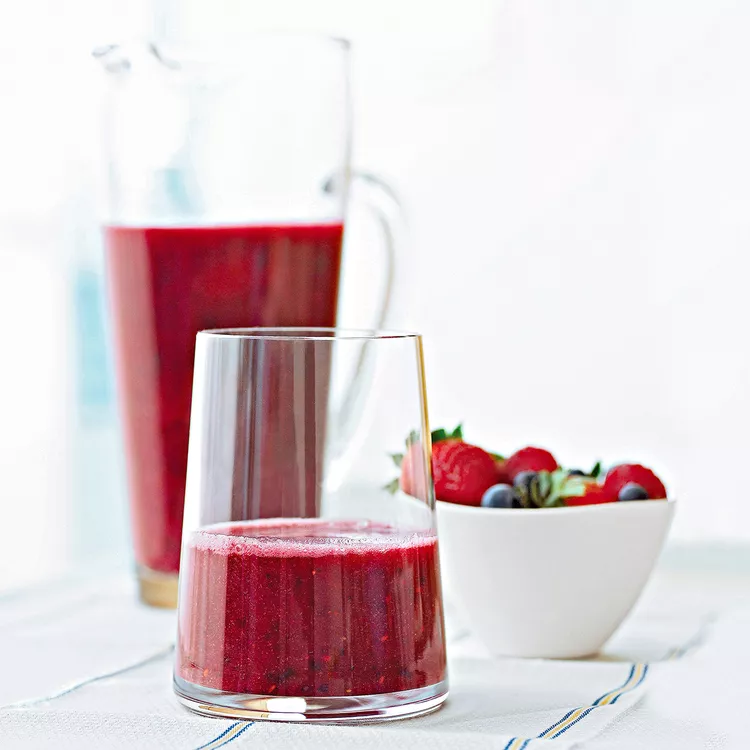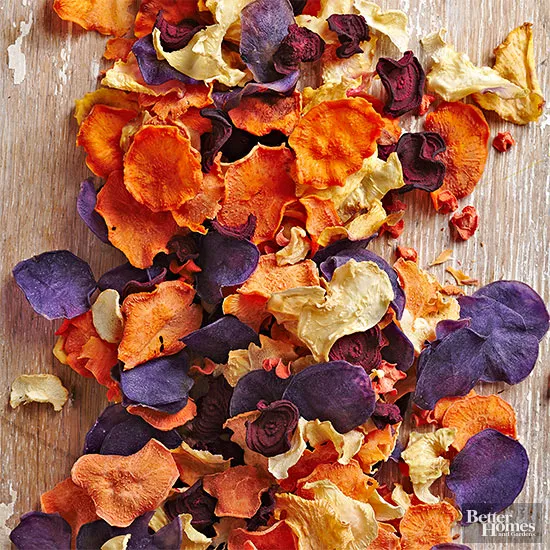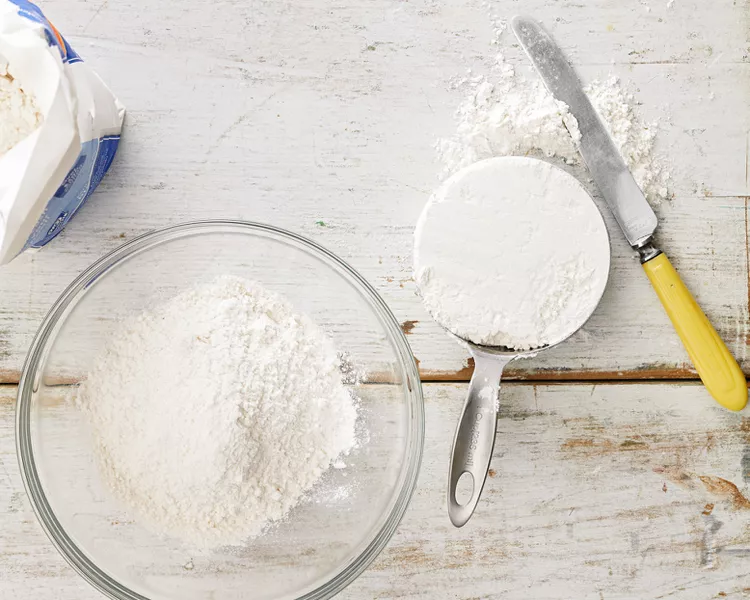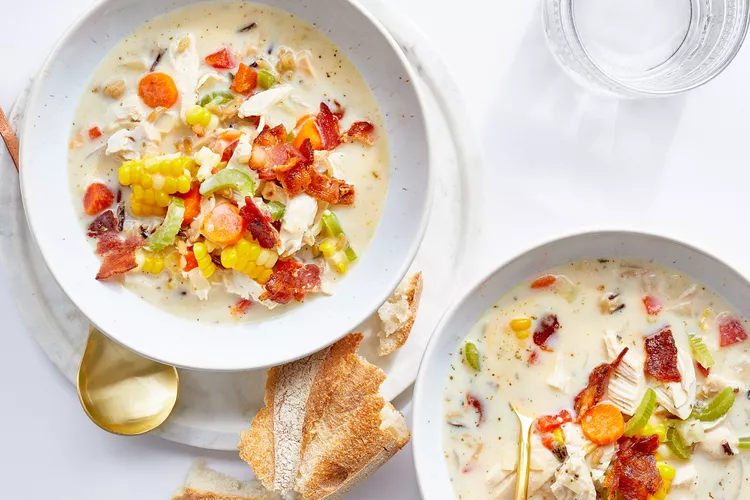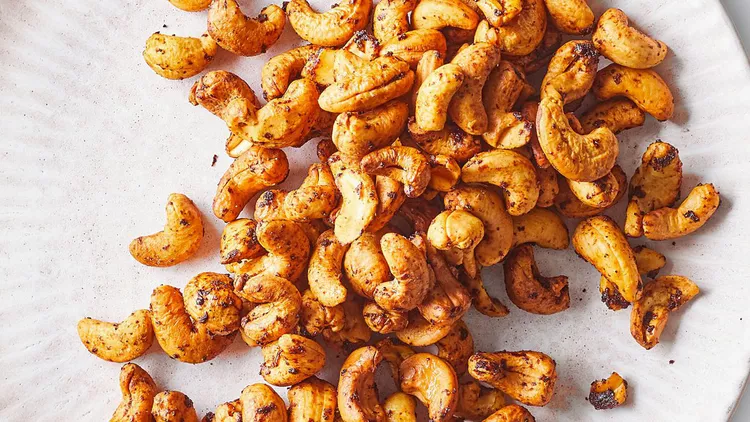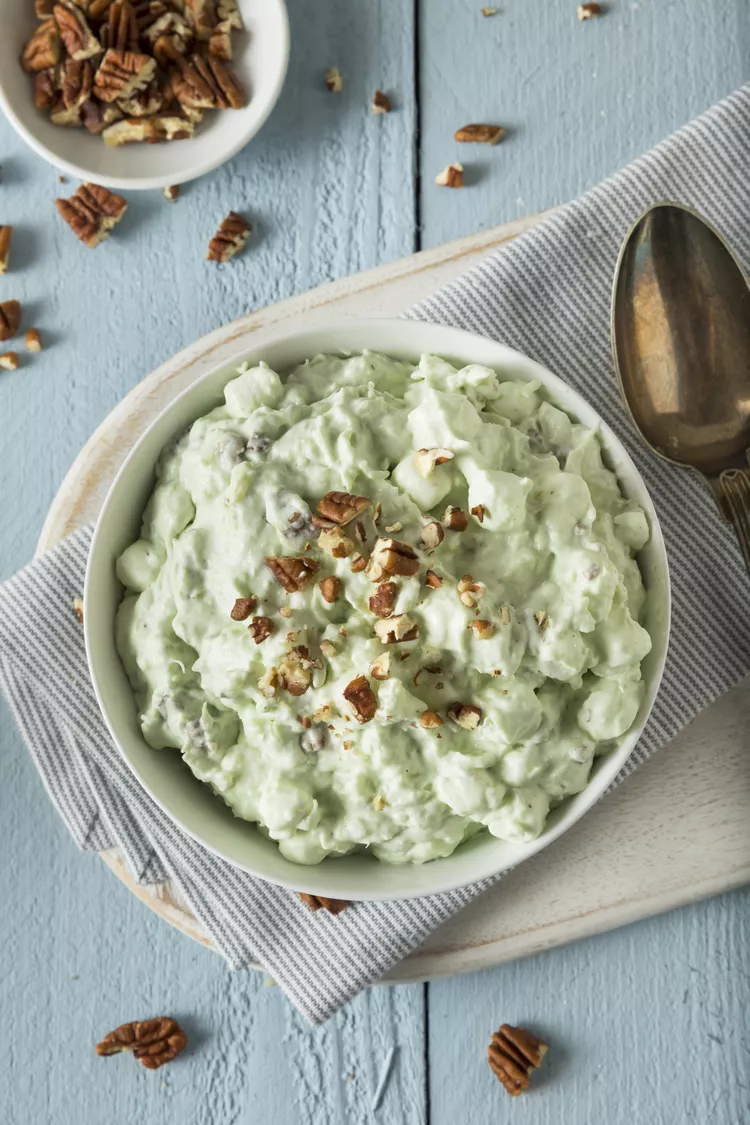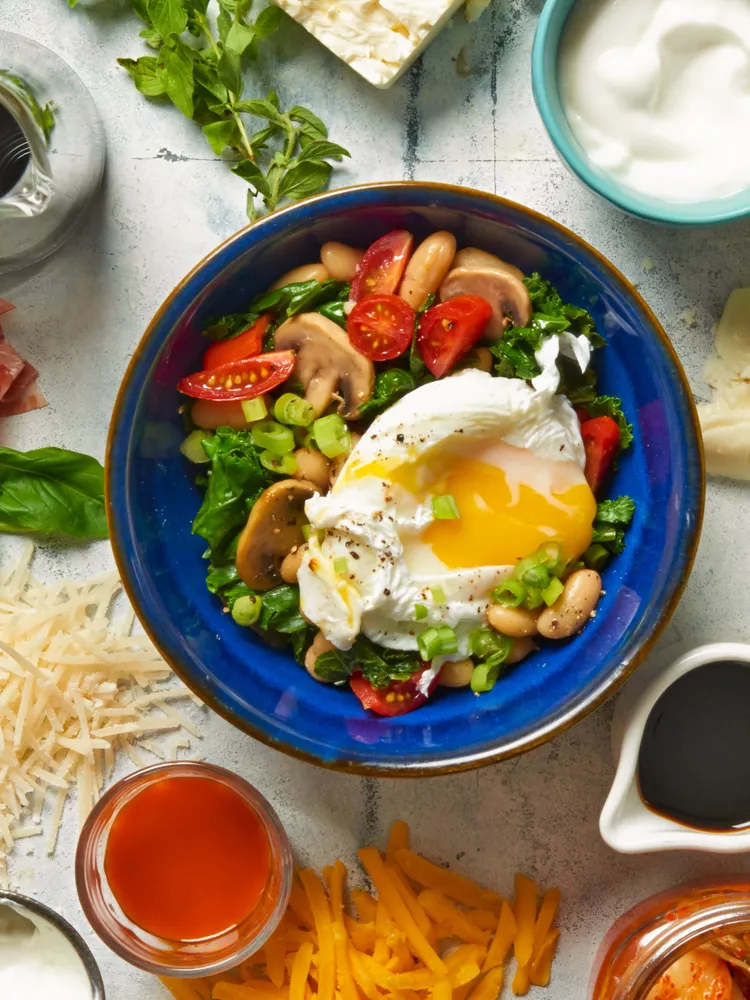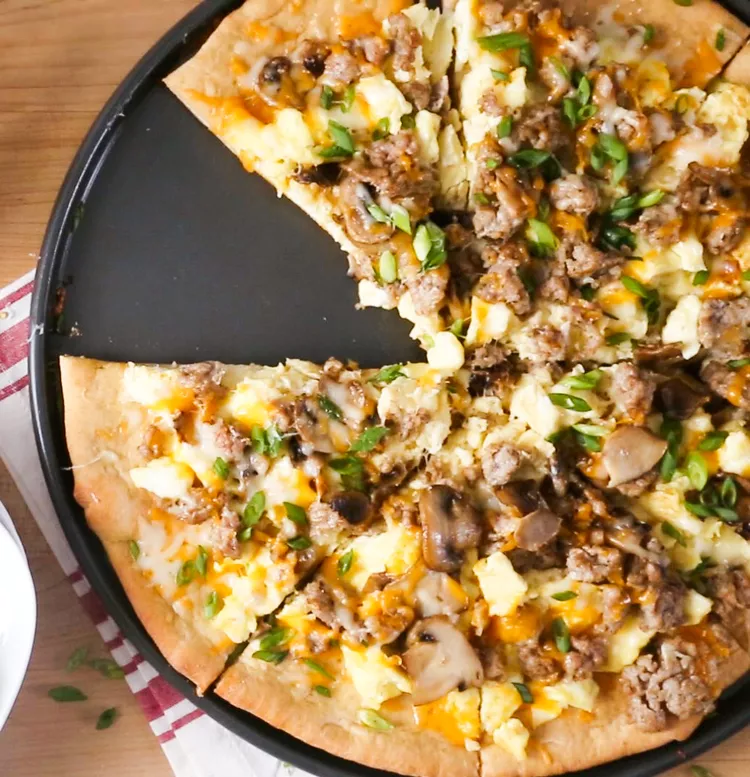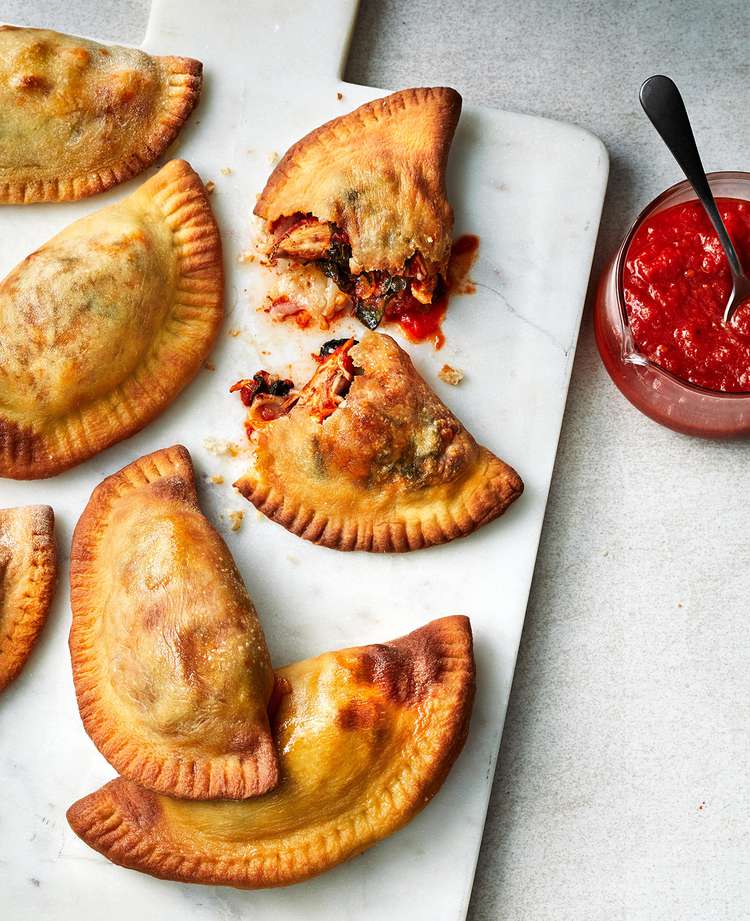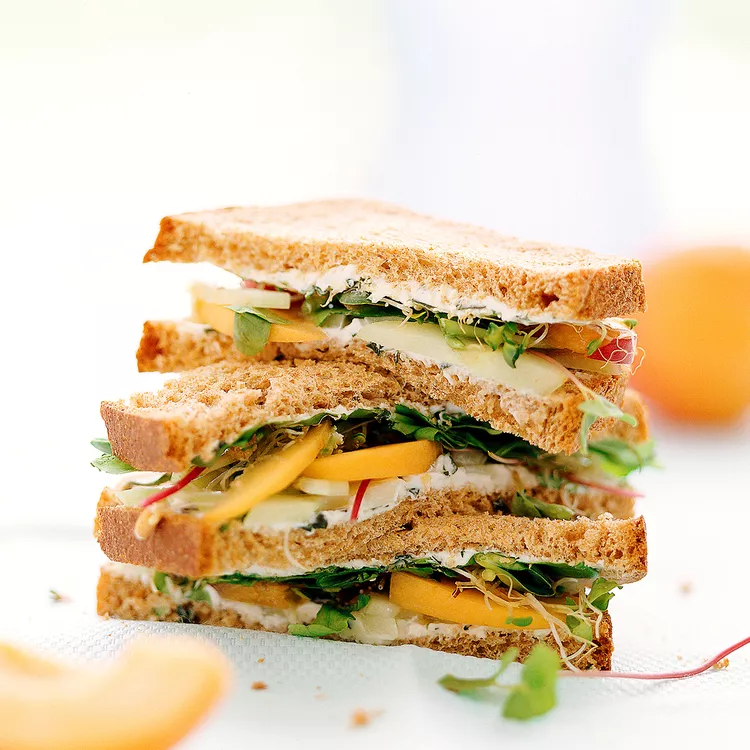Broiling means to cook food using the direct, dry heat from your oven broiler. Some people think of broiling as grilling's cousin, since broiled foods brown on the surface and have a caramelized taste. But unlike when grilling foods, weather is never the issue. Oh, and prep and cleanup are simple. Broiling is often used for steak, chicken, and fish, but creative cooks know that broiling does wonders for many fruits and vegetables, too. There are several advantages to knowing how to broil, but the fact is, most foods only take about 15 minutes to cook, and that might be the most tempting reason to choose broiling. Here are our best tips and tricks to broiling steak, fish, and more in your kitchen.
Best Foods for Broiling
If you haven't yet tried many broiling recipes, here are some examples to spark your imagination.
- Meats: Generally, meats less than 1½ inches thick, such as steaks and pork chops, are good candidates for broiling. Also, because broiling is a dry-heat method of cooking, you'll want to use tender beef cuts or steaks, including ribeye, tenderloin, top loin, top sirloin, tri-tip (bottom sirloin), flank, porterhouse, rib, and T-bone. Ground meat patties are also suitable for broiling.
- Chicken and Turkey: A variety of chicken parts work for broiling, including chicken quarters, legs, bone-in breasts, chicken halves, and skinless, boneless breast halves. Turkey breast cutlets and tenderloin steaks also work.
- Fish and Shellfish: Broiling is one of the easiest cooking methods for fresh or frozen fish fillets. Scallops and shrimp are also good candidates.
- Kabobs: Skewers of cubed beef, pork, poultry, shrimp, or scallops (along with vegetables) are a favorite broiled entree and perfect for an easy, prep-ahead company dinner.
- Fruits: What's good on the grill is equally good on the broiler, including peaches, nectarines, pineapple, plums, and mango. Grapefruit and bananas can also be broiled.
- Vegetables: Popular choices include asparagus spears, bell pepper strips, tomato halves, and onion wedges.
How to Prepare the Broiler Pan and Oven Rack
Before you broil, it's important to know how to set up the oven for success. If you have a broiler pan, use it. The two-piece shallow roaster-like pan has a drip tray that will catch any oils. Baking pans will also work, but just make sure the pan is sturdy enough not to warp under the high heat. Spray nonstick pans with nonstick cooking spray. If you don't have a nonstick pan or if you're cooking messy foods, you can line the top and bottom parts of the broiler pan with regular or nonstick aluminum foil. For the top part of the broiler pan, be sure to cut slits through the foil so fat can drain. Another option is to grease the broiler pan with a pastry brush dipped in softened butter or shortening.
To make sure your oven rack is at the right height, place the pan with the food on the top oven rack in a cold oven. Adjust the rack until the surface of the item to be broiled is at the recommended distance from the broiler element. See individual foods and recipes below for guidelines.
How to Broil Steak and Other Meats
Check your recipe for the broiling time, but you also can use our tips below as a general guide for broiling steak in the oven . Start by preheating the broiler, then place the meat on the unheated rack of a broiler pan. For cuts less than 1½ inches thick, broil three to four inches from the heat. For 1½-inch thick cuts, broil four to five inches from the heat. Broil for the time listed below or until done, turning meat over after halfway through. For steaks, cover and let stand for five minutes before serving.
Broiling Beef
To achieve medium-rare doneness on the following cuts of beef, cook to a safe internal temperature of 145 degrees Fahrenheit. For medium, cook to 160 degrees Fahrenheit. Determine doneness with an instant-read thermometer.
- Boneless steak (chuck eye, shoulder center, ribeye, flat-iron, tenderloin, top loin): For 1-inch thickness, broil 12 to 14 minutes for medium rare, or 15 to 18 minutes for medium. For 1½-inch thickness, broil 18 to 21 minutes for medium rare, or 22 to 27 minutes for medium.
- Boneless top sirloin steak: For 1-inch thickness, broil 15 to 17 minutes for medium rare, or 20 to 22 minutes for medium. For 1½-inch-thick steaks, broil 25 to 27 minutes for medium rare, or 30 to 32 minutes for medium.
- Boneless tri tip steak (bottom sirloin): For ¾-inch thickness, broil six to seven minutes for medium rare, or eight to nine minutes for medium. For 1-inch steaks, broil nine to ten minutes for medium rare or eleven to twelve minutes for medium.
- Flank steak: For flank steaks weighing 1¼ to 1¾ pounds, broil 17 to 21 minutes for medium done.
- Steak with bone (porterhouse, rib, T-bone): For 1-inch thick steaks, broil 12 to 15 minutes for medium rare, or 15 to 20 minutes for medium. For 1½-inch thickness, broil 20 to 25 minutes for medium rare, or 25 to 30 minutes for medium.
Ground Meat patties (beef, lamb, pork, or veal): For ½-inch-thick patties, broil 10 to 12 minutes. For ¾-inch patties, broil 12 to 14 minutes.
Broiling Lamb
Cook to an internal temperature of 160 degrees Fahrenheit for medium.
- Chop (loin or rib): For 1-inch thickness, broil for 10 to 15 minutes.
- Chop (sirloin): For 1-inch thick chops, broil for 12 to 15 minutes.
Broiling Pork
Cook pork to 145 degrees Fahrenheit (medium) on these cuts.
- Chop (boneless top loin): For ¾-inch and 1-inch chops, broil nine to 11 minutes. For 1¼-inch to 1½-inch thick chops, broil 16 to 20 minutes.
- Chop with bone (loin or rib): For ¾-inch and 1-inch chops, broil for nine to 12 minutes. For 1¼-inch and 1½-inch chops, broil for 16 to 20 minutes.
- Chop with bone (sirloin): For ¾-inch and 1-inch chops, broil for 10 to 13 minutes.
- Ham steak, cooked: For 1-inch thickness, broil for 12 to 15 minutes.
Other Meats
Already cooked meats, such as sausage, should be heated through to a safe internal temperature of 140 degrees Fahrenheit. Veal should cook to 160 degrees Fahrenheit for a medium center.
Frankfurters and sausage links, cooked: Broil for three to seven minutes or until heated through.
Veal chop (loin or rib): For ¾-inch to 1-inch thickness, broil for 14 to 16 minutes. For 1-1/2-inch chops, broil for 21 to 25 minutes.
How to Broil Chicken and Poultry
If desired, remove the skin and sprinkle your poultry with salt and black pepper. Preheat the broiler for five to 10 minutes. Arrange the poultry on an unheated rack of a broiler pan with the bone side(s) up. If desired, brush with vegetable oil. Place the pan under broiler so the top surface of the poultry is four to five inches from the heat. Chicken and Cornish game hen halves should be five to six inches from the heat. Turn the pieces over when they're brown on one side, usually after half of the broiling time. Chicken halves and quarters and meaty pieces should be turned after 20 minutes. Brush again with oil. The poultry is done when the meat is no longer pink and the juices run clear. If desired, brush with a sauce the last five minutes of cooking. Follow your recipe or use our guide below to help you determine broiling time.
Broiling Chicken
Doneness should be determined with an instant-read thermometer. Although chicken is considered safe when it reaches 165 degrees Fahrenheit, our Test Kitchen prefers slightly higher temps for some. See below:
- Broiler-fryer and meaty chicken pieces (175 degrees Fahrenheit): Breast halves, drumsticks, and thighs with bone, 2½ to three pounds, 25 to 35 minutes
- Kabobs (165 degrees Fahrenheit): Boneless breasts, cut into 2½-inch strips and threaded loosely on skewers, eight to 10 minutes
- Skinless, boneless breast halves (165 degrees Fahrenheit): six to eight ounces, 15 to 18 minutes
Broiling Game
These should reach a safe internal temperature of 165 degrees Fahrenheit.
- Cornish game hen, half: For 10 to 12 ounces, broil 25 to 35 minutes.
- Boneless duck breast, skin removed: For six to eight ounces, broil 14 to 16 minutes
Broiling Turkey
These should reach a safe internal temperature of 165 degrees Farenheit.
- Breast cutlet: For 2-ounce turkey cutlets, broil six to eight minutes
- Breast tenderloin steaks (to make ½-inch thick steaks, cut a turkey tenderloin in half horizontally): For four to six ounce steaks, broil eight to 10 minutes
How to Broil Fish
For fish fillets or steaks, place fish on the greased rack of a broiler pan, adjusting so the fish is about four inches from the heat source. For fillets, tuck any thin edges under. Brush the fish with olive oil or melted butter. Broil four to six minutes per ½-inch thickness. If the fish is thicker than one inch, turn once halfway through the broiling time. Minutes count when it comes to fish, so keep a close eye on it. Properly cooked fish with white flesh is opaque and flakes when tested with a fork. Juices should be milky white. For fish with darker flesh, such as salmon, simply use the fork test. The flesh should flake easily.
How to Broil Vegetables
Broiling vegetables gives them caramelized edges and boosts flavor, while keeping them crisp-tender. Bell peppers and chile peppers are often broiled for a charred flavor and to help loosen the skin for peeling. Use a 15x10x1-inch pan instead of a broiler pan for veggies that need to be stirred while broiling. Line the pan with aluminum foil for easy cleanup.
- Peppers: To broil bell peppers and chili peppers, place them on a pan six to eight inches below the broiler element. Broil until lightly charred, turning the peppers occasionally with tongs until they are charred on all sides. Place charred peppers in a sealed clean paper bag. When they're cool enough to handle, remove the skins and seeds. Use gloves if you're handling chile peppers.
- Tomatoes. Any full-size tomato can be used for broiling, but plum tomatoes are the perfect size. If you have large tomatoes, you may want to cut them into smaller pieces. Core and cut the tomatoes in half from top to bottom. Place the halves, cut side up, in a baking pan. Sprinkle with salt and ground black pepper and, if desired, a little shredded cheese or blue cheese crumbles. Broil for three to four minutes. Let cool; serve with your favorite vinaigrette dressing.
- Asparagus and Zucchini: The cooking method is the same for both of these vegetables. For asparagus, break or cut off tough ends. For zucchini, cut into ¼-inch slices. Place on a foil-lined baking pan. Toss with one to three tablespoons of olive oil and season as desired with salt and ground black pepper or a seasoning blend. Make sure the vegetables are arranged in a single layer. Place them about five inches from the broiler element, turning halfway though. Broil asparagus about six to eight minutes, and zucchini about five to six minutes. If desired, sprinkle with Parmesan cheese.
How to Broil Fruit
Grilled fruit is a popular addition to salads, chopped into salsas, or served as a dessert. Use a large foil-lined baking pan for these fruits.
- Bananas: Peel and cut bananas into 2-inch chunks. Toss them with lemon juice, then sprinkle with brown sugar until they're evenly coated. Broil four inches from heat, about two minutes per side until golden. If desired, serve with a sauce made with yogurt and a little honey.
- Peaches and Nectarines: Peel and cut in half, removing the pits. Toss the halves with honey, coating evenly. Or toss the halves with lemon juice, then with brown sugar. Broil about six inches from heat, three to five minutes.
- Mangoes: Peel and slice mangoes; place in pan. Broil about six inches from the heat for eight to ten minutes, or until lightly browned. If desired, squeeze fresh lime juice over the slices.
- Pineapple: Cut and core pineapple. Cut the pineapple into ¼- to ⅜-inch-thick slices; broil four to five inches from the heat for six to nine minutes, turning once. You might serve them with tropical-flavor yogurt or ice cream.
- Grapefruit. Cut grapefruit in half crosswise. Place the halves, cut side up, in pan. Sprinkle with brown sugar; broil six to eight inches from the heat until lightly browned.
Now that you know what broiling means, you can make all sorts of delicious dishes for quick and easy meals.
